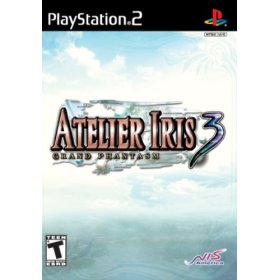So I’ve logged about 20hrs on the game now, more than the halfway point, and there’s definitely pluses and minuses for the game.
Pluses:
– The quest system is pretty good to fill in the game where the story can’t take the game (that is, the main story to this point is not all-encompassing, yet). Since you can take many quests at a time, you can be efficient in running between the Alterworlds (read: monster fields) and complete many quests at the same time. Mind you, certain missions (which are at the culmination of each “chapter”) only start once you’ve either raised your Guild level by taking enough quests, or by increasing your alchemy level through items you gain by exploring specific Alterworlds and through recipes you learn as rewards for quests. I’m sure that there’s a logical reason for how the quests are given such that the player can always achieve the levels that he or she needs.
– The combat system is actually pretty good. The Burst mode, which you get by achieving lots of hits on your foes while avoiding hits from them, is usually necessary for strong monsters and bosses, and thus figuring out how to manage your party to get there as fast as possible is necessary. You also need to take in the various resistances and weaknesses that the monsters have; I had one battle take me about 15 minutes of gameplay because I had to figure out the right order to hit one of three baddies with different resistances and their own healing powers.
Minuses:
– The alchemy side feels even more dumbed down compared to the first game. You gain recipes through play, and then you are always given an option of switching ingredients with knowledge of creating a new recipe with certain ingredients. (for example, a recipe that uses a fire stone to make a fire ring is obviously adjustable to make an ice ring by using an ice stone). Basically, to expand the alchemy “cookbook”, you just need to see what ingredients are switchable and work from there. In Atelier Iris 2, there was the ability to work with property reviews (inherent properties of items that contributed to certain stats or abilities, eg: HP+(S) gave a small gain to hit points) on base items to make even stronger more complex items. An example would be making a healing charm that used a healing potion as it’s base: if you figured a way to combine a lot of high HP properties, you’d make an extremely powerful ring. This sorta exists here, but the amount of materials and reviews available is so limited that it feels there’s only small changes that I can eventually make on the more complex items. I though that the alchemy part of the Atelier Iris series was one of the better parts, but it’s very weak here.
– A lot of repetition in terms of getting around town and some of the Alterworlds. The town does provide boats to get to certain points quickly but still, there’s time to get there. Most of the Alterworlds have key points that are several screens into the level, and though a few provide shortcuts that you can use later in the game, it’s still rather boring to work through them; at least the wandering monsters that are visible have a color associated with them depending on their power relative to your parties, and blue monsters, the weakest, you can destroy without entering battle just by hitting them with a sword, so you don’t have to wade through endless battles to get to certain points.
Filed under: atelier-iris-series, atilier-iris-3, jrpg, mid-game-thoughts, playstation-2 | Leave a comment »
 Atelier Iris 3: Grand Phantasm, developed by Gust and distributed by NIS America, is, like the previous games in the series, a sequel in terms of gameplay and concept to the Atelier Iris system known for its retro 2D look and focus on alchemy within the game. While this time around throws in a few interesting concepts such as a quest system, the game gets exceeding boring and repetitive in the late game, lasting probably 25% longer than it should, and other elements, notably the alchemy system, just don’t have the same oomph that it had in the other games. Tied with a rather bland story, the game is rather disappointing and definitely not a place to start for gamers unfamiliar with the series, nor a must-have for fans of the previous entries.
Atelier Iris 3: Grand Phantasm, developed by Gust and distributed by NIS America, is, like the previous games in the series, a sequel in terms of gameplay and concept to the Atelier Iris system known for its retro 2D look and focus on alchemy within the game. While this time around throws in a few interesting concepts such as a quest system, the game gets exceeding boring and repetitive in the late game, lasting probably 25% longer than it should, and other elements, notably the alchemy system, just don’t have the same oomph that it had in the other games. Tied with a rather bland story, the game is rather disappointing and definitely not a place to start for gamers unfamiliar with the series, nor a must-have for fans of the previous entries.

